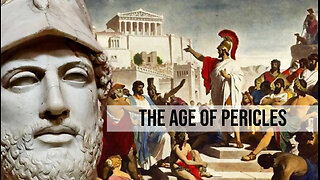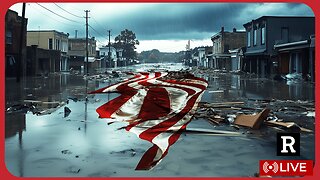The Italian Renaissance | Savonarola and the Republic (Lecture 27)
Lecture 27: The regime established by Savonarola was a puritanical theocracy. Although the institutions of the republic continued, Savonarola had become the guiding force in the city and directed a potent faction that supported his policies. Simple pleasures, such as cards and carnival, were banned; bands of boys collected “vanities,” parading them through the streets and setting bonfires in the Piazza della Signoria. A broadly based republican constitution was written by Savonarola and instituted by his followers.
The monk began to preach against the Borgia pope, Alexander VI, resulting in his excommunication. Believing the French to be God’s scourge for a decadent Church and a “pagan” Italy, Savonarola also refused to abandon the French alliance, despite the hostility of Italians to the foreign invaders. Diplomatic and natural disasters, however, began to alienate moderate Florentines, who in 1498, arrested Savonarola and tried and burned him as a heretic, yet his faction and his constitution for Florence survived him.
Secondary Sources:
Gene A. Brucker, Renaissance Florence.
Supplementary Reading:
Lorenzo Polizzotto, The Elect Nation: The Savonarolan Movement in Florence, 1494–1545.
Donald Weinstein, Savonarola and Florence: Prophesy and Patriotism in the Renaissance.
Lecture 28: https://rumble.com/v4yl6pq-the-italian-renaissance-the-medici-restored-lecture-28.html
-
 28:49
28:49
The Great Courses
15 days agoThe Age of Pericles | Plato (Lecture 23)
69 -
 LIVE
LIVE
Donald Trump Jr.
6 hours agoOn Every Issue, the Left is Lying, Interviews with Ned Ryun & Dinesh D’Souza | TRIGGERED Ep.178
5,476 watching -
 1:54:42
1:54:42
Kimberly Guilfoyle
3 hours agoSave America: President Trump in Erie, PA- Replay September 29
29.6K18 -
 1:57:39
1:57:39
Redacted News
3 hours agoNATIONAL EMERGENCY! DEVASTATION WORSE THAN HURRICANE KATRINA, MEDIA SILENT | Redacted News
82.1K231 -
 46:00
46:00
Candace Show Podcast
3 hours agoKamala Must Answer For This Deranged Lie | Candace Ep 75
85.5K242 -
 1:01:59
1:01:59
In The Litter Box w/ Jewels & Catturd
1 day agoMIA: Hurricane Helene Harris | In the Litter Box w/ Jewels & Catturd – Ep. 657 – 9/30/2024
64.3K33 -
 1:13:27
1:13:27
Lee Camp
5 hours agoLIVE: The US Fights To STOP Peace From Breaking Out (& much more)
39K -
 2:00:02
2:00:02
Film Threat
9 hours agoVERSUS: THE PENGUIN + MEGALOPOLIS | Film Threat Versus
17.6K2 -
 2:00:33
2:00:33
Revenge of the Cis
4 hours agoEpisode 1383: Emasculated
34.9K2 -
 6:39:54
6:39:54
LumpyPotatoX2
9 hours agoThrone & Liberty: Starring SirLumpy | Early Access - #RumbleGaming
51.9K5